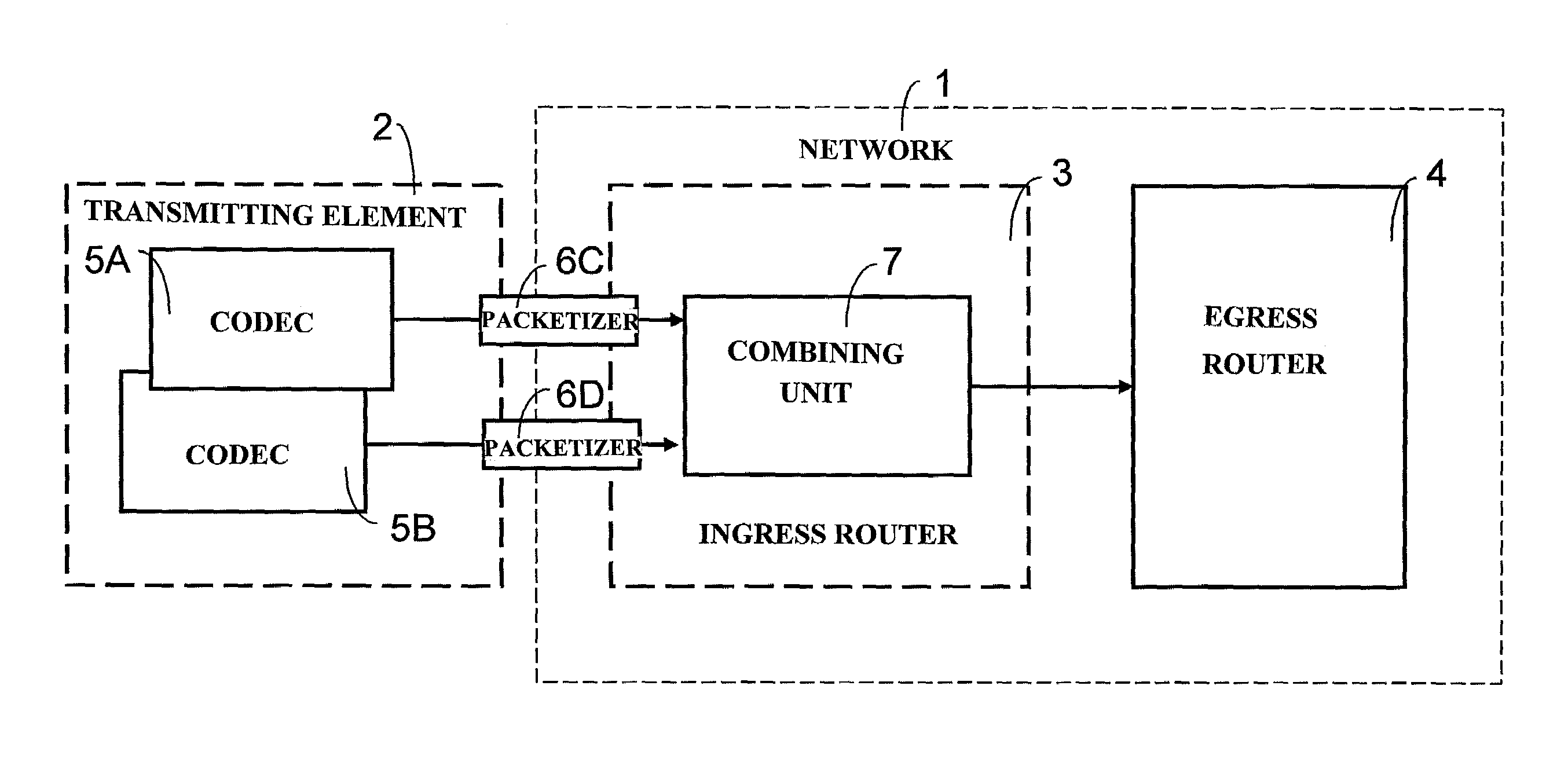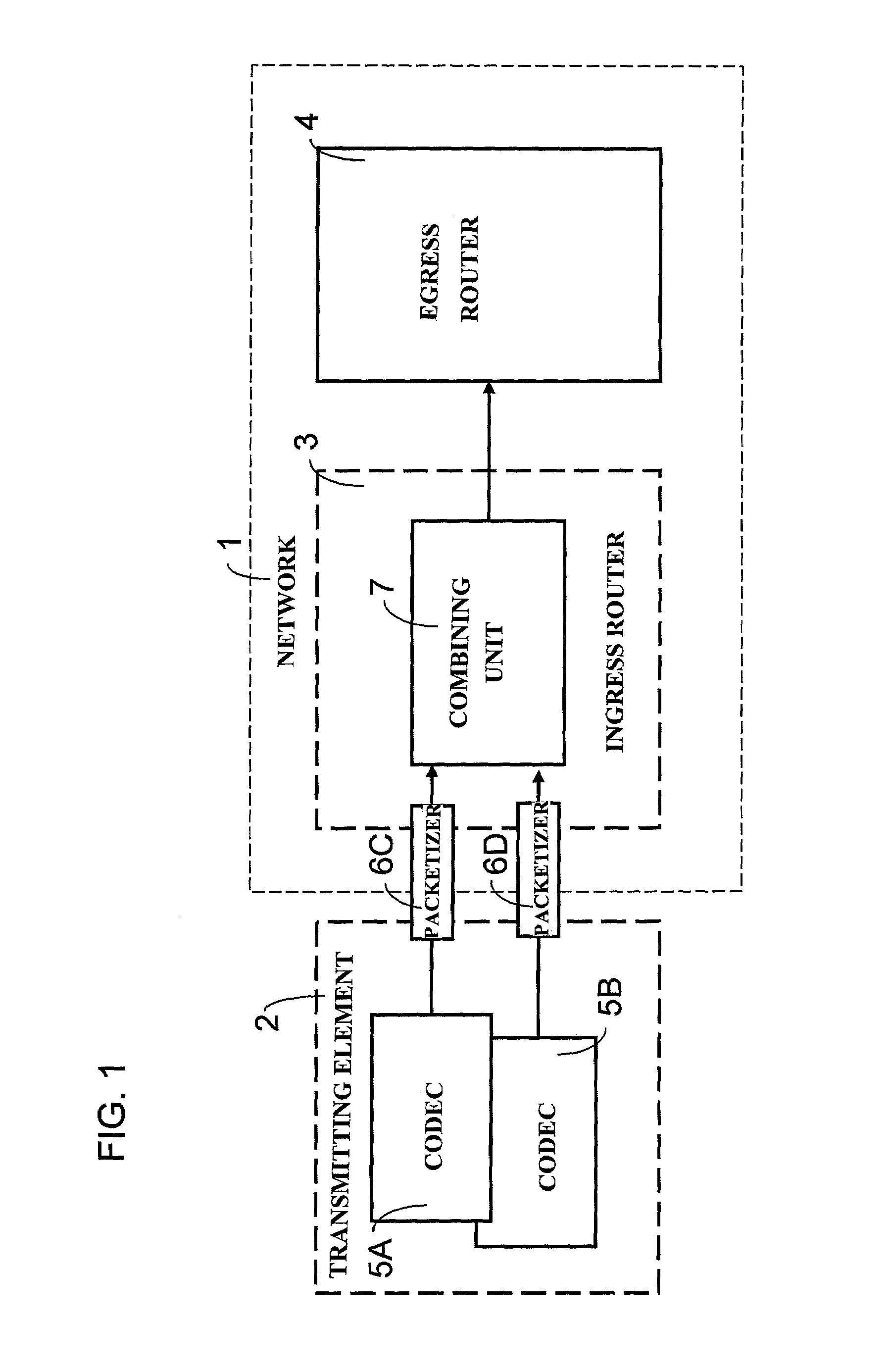Method for optimizing the use of network resources for the transmission of data signals, such as voice, over an IP-packet supporting network
a network resource and data frame technology, applied in the field of optimizing the use of network resources for the transmission of data frames, can solve the problems of less efficient use of network resources, higher resource reservations in the ip, and higher cost for the end user, so as to reduce the need for resource reservations and reduce the need for network resources. the effect of reducing the need for network resources
- Summary
- Abstract
- Description
- Claims
- Application Information
AI Technical Summary
Benefits of technology
Problems solved by technology
Method used
Image
Examples
Embodiment Construction
[0016]An example of a telecommunication system to which the method according to the invention can be applied is illustrated at FIG. 1. The telecommunication system shown includes a network 1 and a plurality of voice transmitting terminals or equipments here considered as elements of a transmitting entity 2. The network 1 is supposed to be an Internet Protocol [IP] packet supporting network. It comprises nodes or units and particularly units serving as ingress, egress and / or core routers, such as an ingress router 3 and egress or core router 4. These two routers 3 and 4 are for instance two multimedia gateways [MGW] that are part of an UMTS network.
[0017]Codecs, such as 5A and 5B, are associated to user terminals or equipments to sample and digitally code data signals, here preferably voice signals, before transmission to an ingress router. Voice samples are obtained at the output of a codec according to a determined time frame, which is usually standardized.
[0018]The streams of voic...
PUM
 Login to View More
Login to View More Abstract
Description
Claims
Application Information
 Login to View More
Login to View More - R&D
- Intellectual Property
- Life Sciences
- Materials
- Tech Scout
- Unparalleled Data Quality
- Higher Quality Content
- 60% Fewer Hallucinations
Browse by: Latest US Patents, China's latest patents, Technical Efficacy Thesaurus, Application Domain, Technology Topic, Popular Technical Reports.
© 2025 PatSnap. All rights reserved.Legal|Privacy policy|Modern Slavery Act Transparency Statement|Sitemap|About US| Contact US: help@patsnap.com



